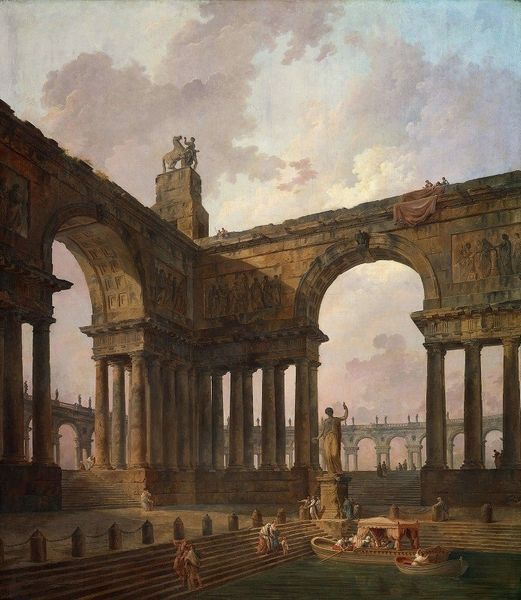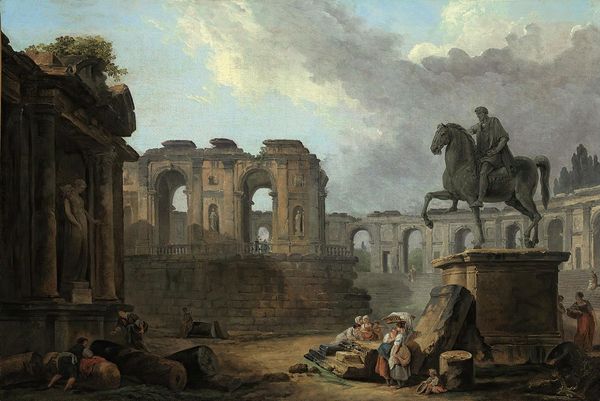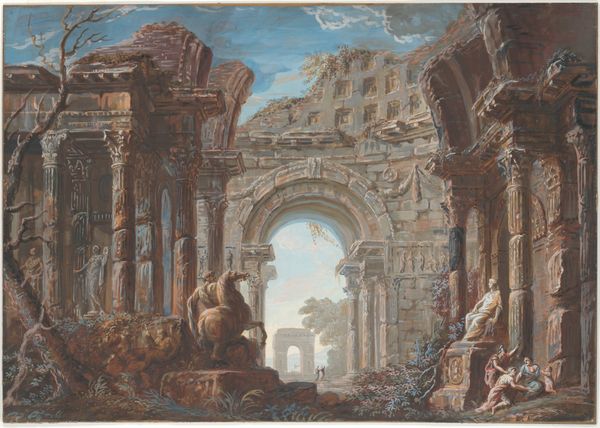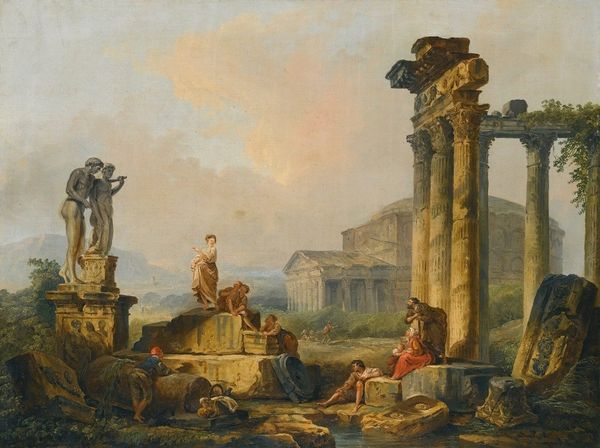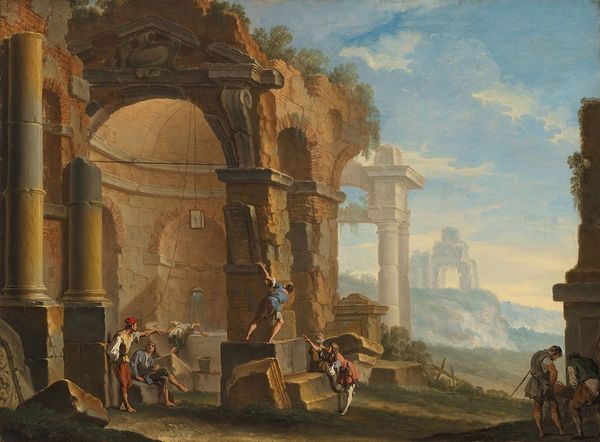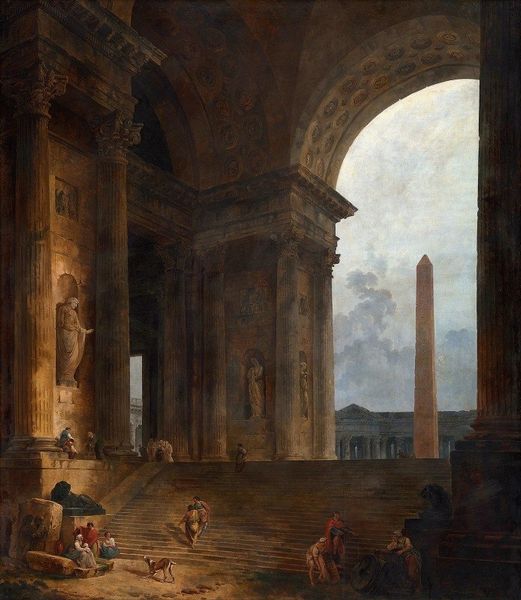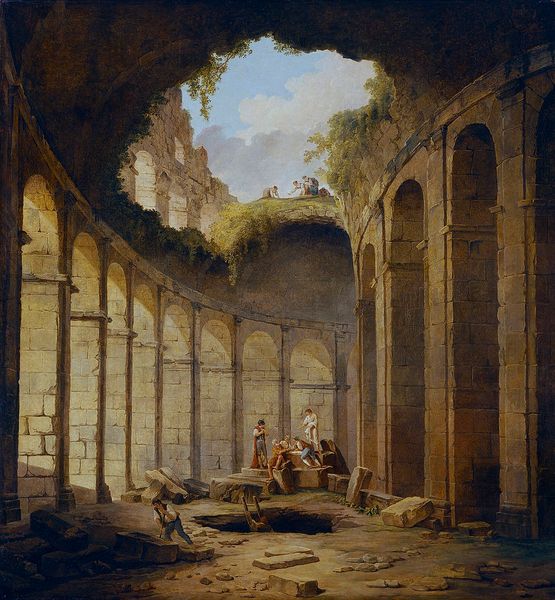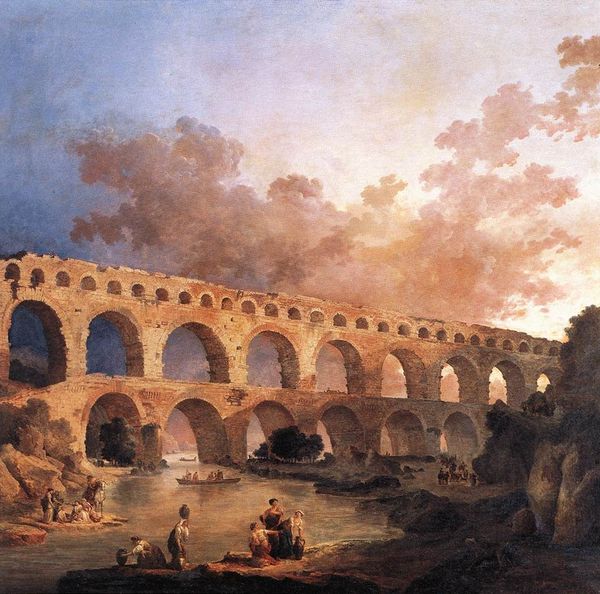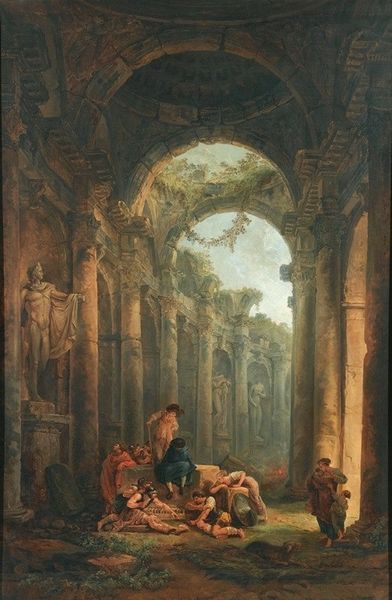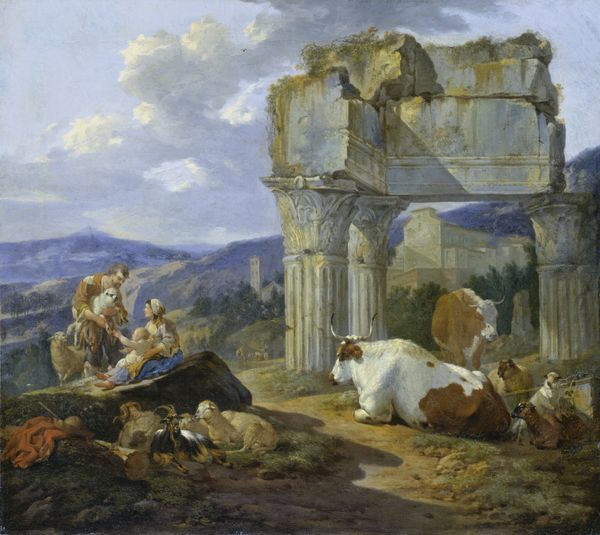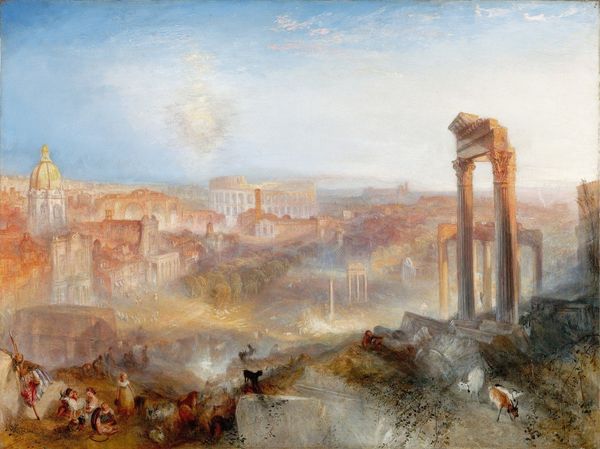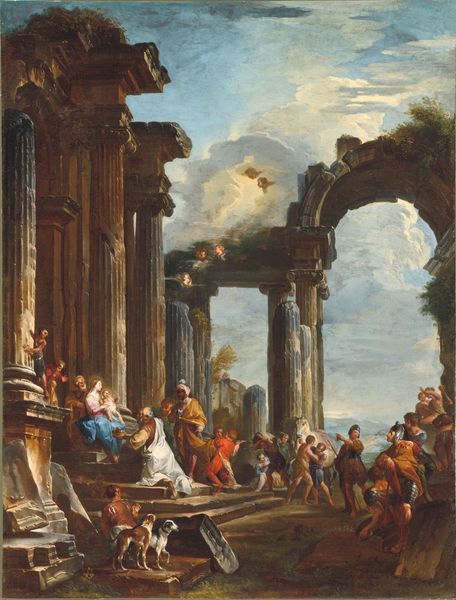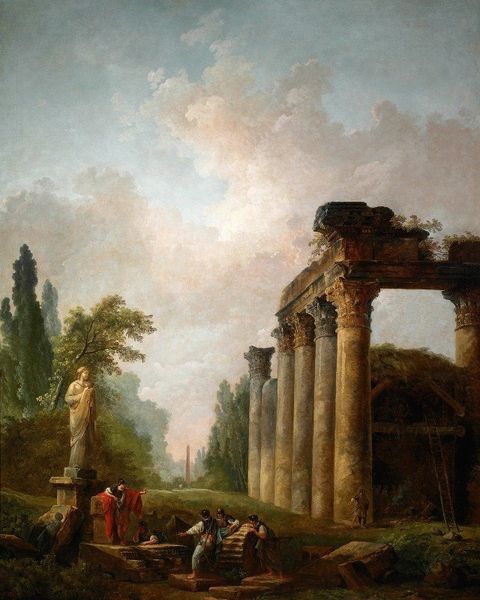
Copyright: Public Domain: Artvee
Editor: We’re looking at Hubert Robert’s “Roman Ruins,” painted in 1773. It's an oil painting depicting a classical cityscape. What strikes me first is the composition: the decaying arch frames a distant city, creating a sense of depth but also melancholy. What stands out to you? Curator: I appreciate your observation of the framing. Note how Robert uses the arch not merely as a subject, but as a compositional device. The eye is drawn through it, yes, but consider the texture of the stone itself, its rough surface and how that contrasts with the smoother surfaces within the cityscape, creating a visual hierarchy. Does that contribute to your interpretation of melancholy? Editor: Definitely! The contrast between the roughness of the ruins in the foreground and the more refined city elements beyond seems deliberate. Is there something about the baroque and romanesque styles that emphasizes contrast? Curator: In terms of style, contrast indeed serves as a pivotal tool for setting moods, and communicating relationships between different representational components, however let us focus on Robert's application of oil paint; notice how the atmospheric perspective contributes to the painting's overall effect. The handling of light and shadow... where does that lead your eye, and what other effects do you see that reinforce the effect? Editor: The way the light hits the arch and then fades into the background does create that atmospheric effect. I see that now. It really draws you into the painting, almost making the distance between the viewer and the city seem vast and timeless. The broken pillars too…all seem deliberately rendered this way to reinforce a theme. What might that theme be, structurally speaking? Curator: Precisely. The structural organization presents a potent visualization of temporality—the decaying grandeur of the past juxtaposed with a semblance of enduring civilization. I find the painting to be a poignant statement about time and cultural permanence. Editor: I see that now. Focusing on the artistic structure helps one understand the painting as more than just a historical landscape. Thank you.
Comments
No comments
Be the first to comment and join the conversation on the ultimate creative platform.

